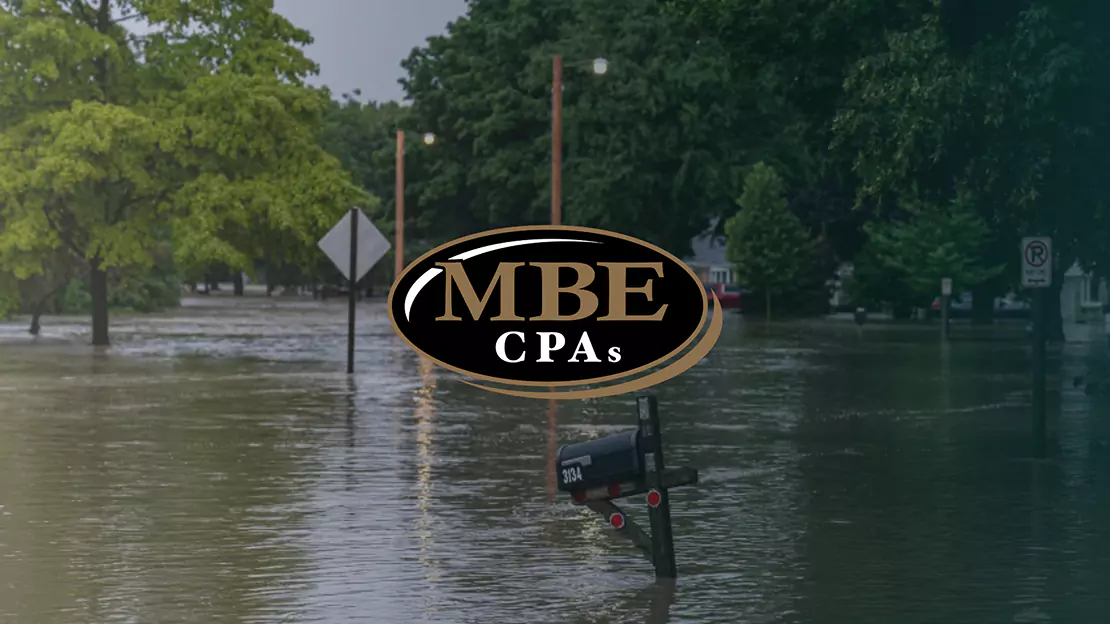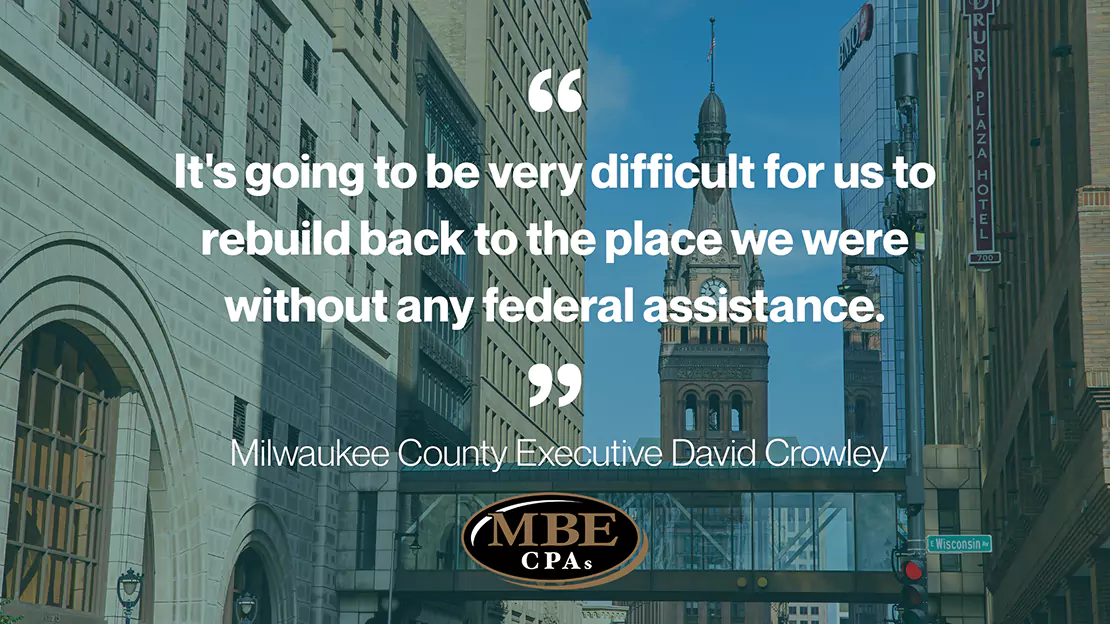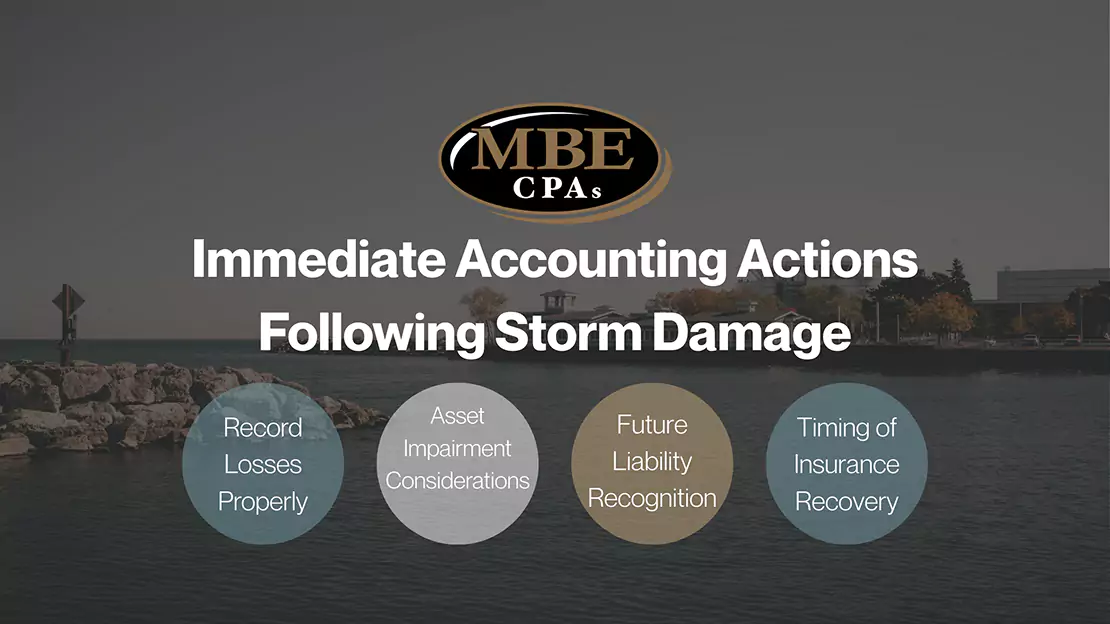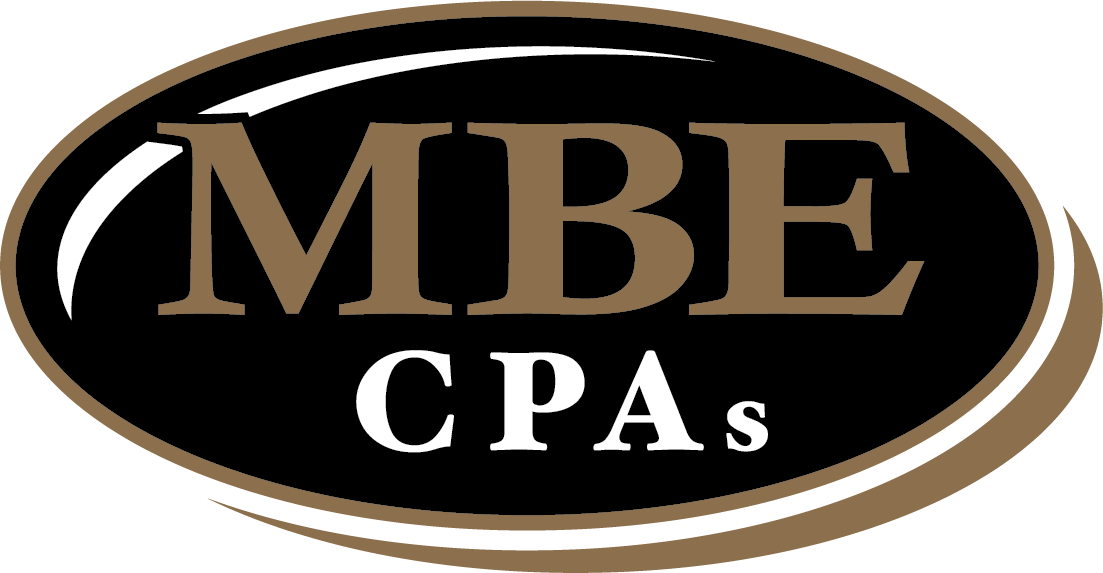How Wisconsin’s Floods Will Shape Manufacturing’s Future

Authored by: Glen Erdman — Director, EA | Date Published: September 5, 2025
The historic flooding that devastated Southeast Wisconsin on August 9-10, 2025, serves as a stark reminder of how natural disasters can instantly transform thriving manufacturing operations into financial battlegrounds. With how unpredictable weather events can be, it is important for all business owners to have the right strategies in place to prevent catastrophic losses in the wake of the storm.
What these storms revealed were the critical accounting vulnerabilities in manufacturing. The lesson for all manufacturers is clear: whether your finances are prepared to carry your business when tragedy strikes.
Featured Topics:
What Happened in Southeast Wisconsin?
Milwaukee experienced its second-wettest day on record with 5.74 inches of rain, causing the worst flash flooding event in southeast Wisconsin since 2008. Some areas reported over 14 inches of rainfall in less than 24 hours, with widespread structural and business damage reported across Milwaukee, Waukesha, Washington, Ozaukee, and Dodge counties.
Waukesha County alone reports $4.4 million in public infrastructure damage and $63.7 million in private losses. Following the floods, Federal Emergency Management Agency (FEMA) is expected to begin assessing the damage first-hand. Governor Tony Evers has requested a federal declaration so homeowners and businesses can receive financial aid, though approval remains uncertain.
If FEMA does not declare a federal disaster, personal casualty losses are not deductible for tax years 2018-2025.
Wisconsin Flood Manufacturing Impact
Southeast Wisconsin remains a manufacturing stronghold, featuring more than a dozen Fortune 1000 companies and thousands of others in critical sectors. While facility damage dominated news coverage, the hidden financial impacts tell a more challenging story.
Businesses must navigate specific accounting requirements to report their flood damage and insurance recoveries.
Immediate Financial Consequences of August Floods
These upfront costs hit manufacturers immediately:
- Replacement and restoration of equipment, requiring immediate capital outlays
- Facility decontamination and sanitization (critical for food/beverage manufacturers)
- Inventory loss and spoilage with complete write-offs for temperature-sensitive products
- Supply chain disruption costs from production delays
These impacts were incurred immediately following the storms, requiring emergency cash flow management and rapid insurance claim documentation. The heavy rainfall led to production delays which had a trickling effect on the supply chain. Businesses in the flood-affected areas may have prolonged recovery periods which will slow their ability to deliver materials.
Hidden Costs for Manufacturers Following Floods
What many didn’t predict was the hardship that would be experienced long-term from these costs. Many manufacturers discovered their business interruption coverage was inadequate, creating unexpected working capital shortfalls.
Here are some of the unveiled costs:
- Business interruption losses exceeding physical damage costs
- Customer contract penalties for delivery failures and quality issues
- Regulatory compliance costs (especially FDA/USDA requirements for food processors)
- Increased insurance premiums potentially doubling coverage costs
- Working capital strain from extended recovery periods
These hidden costs typically represent a portion of total disaster impact but are often inadequately planned for in forecasting models.
Flood insurance is a specific type of property insurance designed to cover flood losses, made available through NFIP and FEMA. Milwaukee is currently leading the way with the most insurance claims within the state due to the topography of southern Wisconsin.
Disaster preparedness doesn’t just mean having strong structures, but also strategies for how to cover financial costs in times of hardship.

Industry Specific Accounting Challenges
For all industries operating within manufacturing, the accounting implications were similar. Many businesses needed emergency inventory valuation adjustments and insurance claim documentation and recovery tracking. However, specific industries faced unique vulnerabilities.
Industries that were left in a state of vulnerability include food & beverage, dairy operations, and meat processing facilities.
Food Processing Plants
The accounting implications for food processors:
- Immediate write-offs for temperature-sensitive inventory
- FDA compliance restoration and documentation costs
- Accelerated depreciation schedules for flood-damage equipment
- Insurance claim preparation for equipment and contamination
Dairy & Creamery Operations
Financial vulnerabilities in Wisconsin’s dairy sector:
- Perishable inventory with zero salvage value
- Stringent USDA facility re-certification requirements
- Seasonal cash flow vulnerabilities (already an issue)
Meat Processing Facilities
Accounting challenges in processing plants:
- HACCP compliance restoration
- Specialized equipment replacement
- Supply chain contract renegotiation
- Working capital restructuring to manage recovery timelines
Since the effects of these floods are still being felt by Wisconsin residents and business owners, it’s difficult to predict all the implications that will be recognized. Businesses may face customer recall obligations and liability if they don’t follow proper procedures for their temperature-sensitive inventory.
Consulting a team of advisors now can help you optimize your tax strategy and reveal all necessary steps to keep your business afloat.
Manufacturing Business Continuity Strategies
Understanding the tax and financial impact of Wisconsin’s floods will help manufacturers optimize their business strategies. Business owners have the chance to take an emergency response for their accounting needs and help mitigate any weighing challenges. Manufacturers across the nation can learn from this tragedy, preparing their business for unforeseen weather events.
Here is an outlined strategy for manufacturers to recover their business in these times of loss:
Immediate Actions
Businesses should have a damage assessment with professional documentation for insurance claims, preparing with their detailed loss calculations. Manufacturers should use their emergency cash flow to forecast funding gaps and plan for regulatory compliance costs.
Our CPA advisors at MBE CPAs compiled a list of actions to mitigate financial losses if you have suffered storm damage.
- Call your insurance agent
- Take pictures of all the damage sustained by your business
- Keep receipts of all expenses from repairs
- Check to see if your insurance policy covers loss of income
It is important for all manufacturers to record losses properly, consider asset impairments, recognize future liability, and plan the timing of insurance recovery.
Using Section 165 casualty loss provisions, manufacturers can optimize disaster loss tax. Financial state adjustments and restatements should also be planned for, as well as communication to lenders of loans and renegotiations.
Proactive Risk Management
Forward-thinking manufacturers invest in insurance gap analysis, emergency fund adequacy assessments, and multi-location management. These investments ensure equipment coverage, a well-supplemented operating expense reserve, and reduction of concentration risk.
It’s recommended for all manufacturers to continue monitoring FEMA’s declaration status to help you prepare for tax planning. The timing of insurance proceeds is important and requires careful consideration, and contacting an experienced CPA will allow you to navigate your situation with confidence.

MBE CPAs Manufacturing Accounting Services
Professional accounting services become essential during crisis recovery. The manufacturing industry is constantly evolving, and it can be difficult to keep up. At MBE CPAs, we specialize in manufacturing financial management.
Our team of experienced accountants and tax professionals specialize in the manufacturing industry, providing aid with everything from simplifying your accounting procedures to identifying opportunities to reduce costs.
Services we offer:
- Accounting & Bookkeeping
- Audit
- Business Consulting & Advisory
- Tax Planning & Compliance
- Trust and Estates
- Valuations
Our support extends to numerous industries, not limited to the list above. With our industry knowledge, we address the pain points specific to the manufacturing industry, delivering support with compliance, operations, execution, finance, and leadership.
Whether you are struggling with supply chain disruptions, inflation, or flood damage mitigation, we are here to help.
Conclusion
The August flooding in Wisconsin demonstrated that natural disasters don’t just damage facilities, they also expose financial vulnerabilities that can permanently hinder manufacturing operations. Wisconsin residents, and manufacturers across the nation, should look at what they can do to prevent these losses from happening again, or ever.
Companies don’t have to navigate these storms alone. Prepared manufacturers recognize that professional accounting services aren’t just about maintaining compliance with regulations and wrapping up year-end bookkeeping. Actions you can take immediately following a storm include recording losses properly, considering asset impairments, recognizing future liability, and planning the timing of insurance recovery.
By having a strong relationship with an accounting team, your business has a plan to survive, adapt, and compete in an increasingly unpredictable world.
